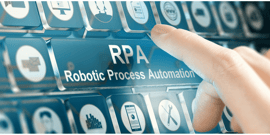BP3 GLOBAL-SERVICE
3 Roadblocks to Transformation
In this video, we will focus on three roadblocks and obstacles we often face in the transformation process.
These roadblocks are showing themselves across businesses and enterprises. Watch this video to find out more.
Speaker 1: Thanks, [Rainer 00:00:01], for sitting down with me today. So, today, we are talking about the three key themes we are seeing across businesses and across enterprises. So you see a lot of enterprise customers running into roadblocks, running into ... I guess "road bumps." So let's talk about those. What are you seeing as three key things that are obstacles, that are getting in people's way?
Rainer: So, for us, I'd say a prevailing failure mode, or prevailing issue where our clients are not capturing as much value as they potentially could are some of the limitations that exist within their own organization. So what is something that we run into very regularly is project-based thinking, project-based budgeting, where the organization, in order to do transformation, is still operating within the constraints of, okay, we've only got a certain amount of funding for this year, and they're already starting to compromise on the results. They're compromising on the transformation.
Rainer: We do try to work to get around these things, to help establish situational awareness to other opportunities that one might put on the back log, but it is really the single largest hampering of value that we see in the market.
Speaker 1: So really people not looking forward enough, and saying, okay, let's start here, and then we'll fund the next project based on this project's success, and then the next project, instead of saying, okay, we need to do a bunch of these projects in parallel.
Rainer: Exactly, but it's also really compartmentalizing the projects.
Speaker 1: What else?
Rainer: So there's a couple of other themes that we're seeing in the market. The one that is coming across very strong now is journey mapping, and it started out as customer journey mapping, but it's actually employee journey mapping as well. So we've been big advocates of the employee experience as well as the customer experience, and really what's important about that is that it is the latest, state of the art invoice of the customer, and by doing that journey mapping, it allows us to have meaningful capability maps that then ultimately underpin the original model.
Speaker 1: So really a paradigm shift in seeing your employees as your customers, too, so making sure your customer journey map is your employee journey map as well. And then also really connecting the two. Making sure that you have a group of people that's responsible for the end to end journey, and working within the constraints of today's budgeting cycles, and things like that, but making sure that entire journey is captured.
Rainer: Exactly, and I would argue ... And there are different operating models for companies, but really the last line of defense to the customer experience are your employees, and so that is the single largest influencer of a happy customer, of a customer that renews or extends or remains committed to your brand. So it is absolutely in the critical path.
Speaker 1: All right. What's the last point?
Rainer: Last point is that we're seeing a lot of phenomenal work come out of the user experience discipline, and this has been something that has been evolving over the last five to 10 years, but what we're still running into is ... We often use the phrase "art of the possible," and what we struggle with with art of the possible is that, with a lot of the higher end user experience firms, or with
the very talented user experience individuals, it's a lot of art, but in many of the discovery sessions and the design sessions, there's no incorporation of a technologist, or somebody to put a double exclamation point on what is possible.
Rainer: And so this is an area where we see a considerable amount of rework, where people have catalogs upon catalogs of requirements, but none of it is based in reality. It's very difficult to reconcile with the existing technology investments that those clients have made, and so one of the areas that we find that we can create a lot of opportunity or a lot of traction is by actually having technology staff, or architects participate in the design experiences or the design sessions so that the user experience that is created is actually feasible.
Rainer: And what we've found is by doing that, it reduces a lot of the interrupt driven nature of creating user experience only to find out that, well, no, that's not going to work with our architecture. It also allows you to optimize on the full picture with all the necessary stakeholders involved.
Speaker 1: Really making sure to connect technology and design.
Rainer: Yes.
Speaker 1: Well, thanks for sitting down with us, and we look forward to having more videos with you.
Speaker 1: You can find more videos with Rainer and more videos about digital transformation and getting started with digital transformation or automation in general here on this channel when you subscribe.


